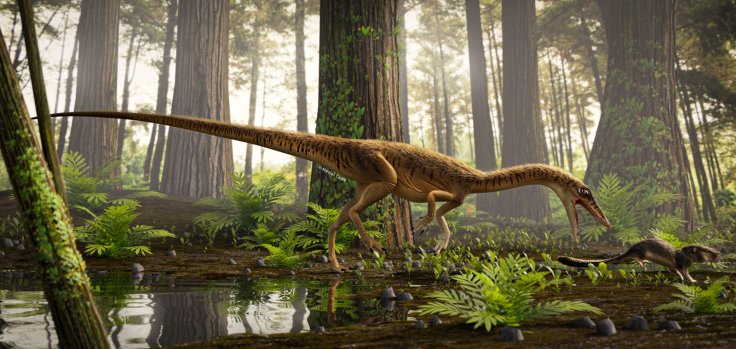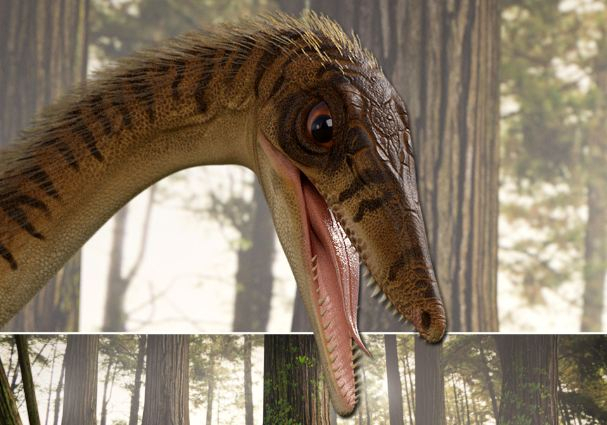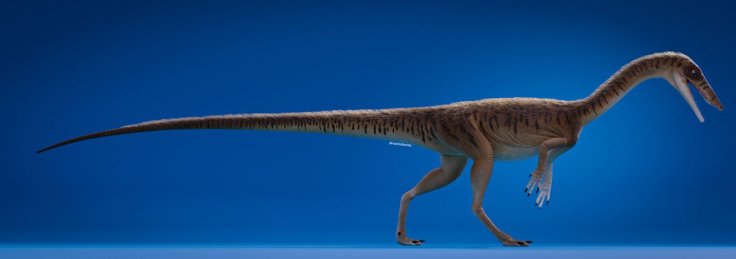Named Erythrovenator jacuiensis, the nearly 230 million-year-old fossil from the Late Triassic age was found in 2017 in Agudo, Rio Grande do Sul, Brazil. Measuring around 2 meters in length, the dinosaur was nowhere close to the colossal sizes that its descendants reached. However, the formation of the femur suggests that it could have been an agile apex predator with strong leg muscles, and may have been one of the earliest or even first carnivorous dinosaurs to exist.

"The new dinosaur represents one of the oldest theropod dinosaurs worldwide, shedding lights on some of the earliest theropod features," wrote Dr. Rodrigo Temp Müller, author of the study that was published in the Journal of South American Earth Sciences.
Ancestor of a Fearsome Line of Predators
Erythrovenator jacuiensis belongs to a natural group or clade of dinosaurs known as Theropoda—a lineage to which other well-known carnivores such as Spinosaurus aegyptiacus, Tyrannosaurus rex, and Velociraptor mongoliensis belonged to. Theropods were characterized by their three-toed limbs and hollow bones. Despite being predominantly carnivorous, several groups of theropods evolved into herbivorous, insectivorous, and omnivorous dinosaurs.

The newly-discovered creature's name translates to "red hunter of the Jacuí River", which is a reference to the red coloration of the fossil, and the proximity of the site of discovery to Jacuí River that flows close by. Unearthed at a fossiliferous region (an area consisting of organic remains and fossils) called "Niemeyer Site", Erythrovenator jacuiensis was not the only animal dug up in the area.
Several reliquiae of previously unknown animals have also been found at the site, some of which are ancient relatives of modern-day mammals. This suggests that Erythrovenator jacuiensis may have preyed on some of them. The analysis of the fossilized specimen, which consists of a proximal section of a left femur, suggests that the forefather of T-rex had strong legs that would have equipped it with swift locomotory capabilities.
One of the Oldest Theropods In The World

Another important aspect of the finding is that the uncovering of the theropod ancestor makes it the first carnivore to be unburied from a fossil assemblage that has so far been dominated by a herbivore called Siriusgnathus, that resembled a wolf, and a smaller insectivore known as Agudotherium. Both the creatures belonged to the clade Cynodontia, which comprises several extinct species of animals, and also existing ones such as human beings.
Dinosaurs arose and flourished between the Jurassic and Cretaceous Periods (from 201 to 66 million years ago). Interestingly, the dating of Erythrovenator jacuiensis proposes that it existed at a time when dinosaurs were believed to be rare constituents of ecosystems. "Therefore, the new dinosaur represents one of the oldest theropod dinosaurs worldwide, shedding lights on some of the earliest theropod features," wrote the author.









